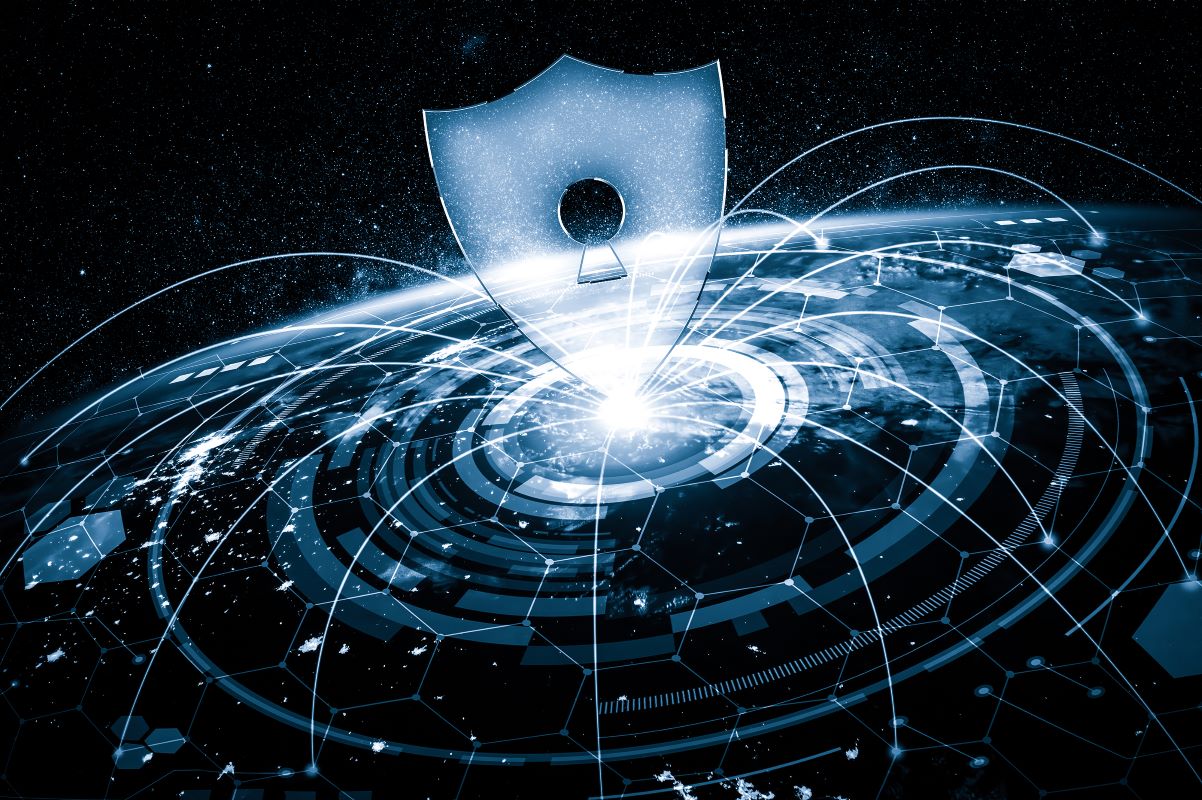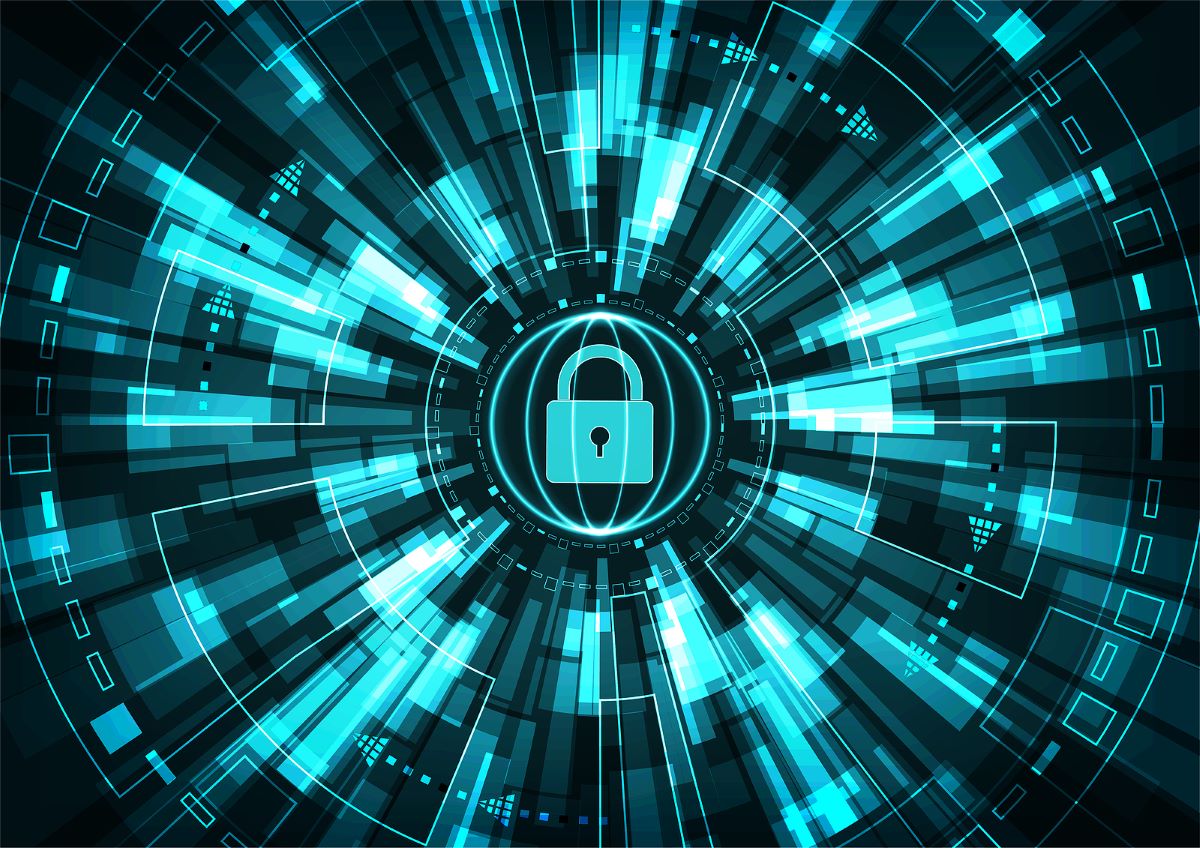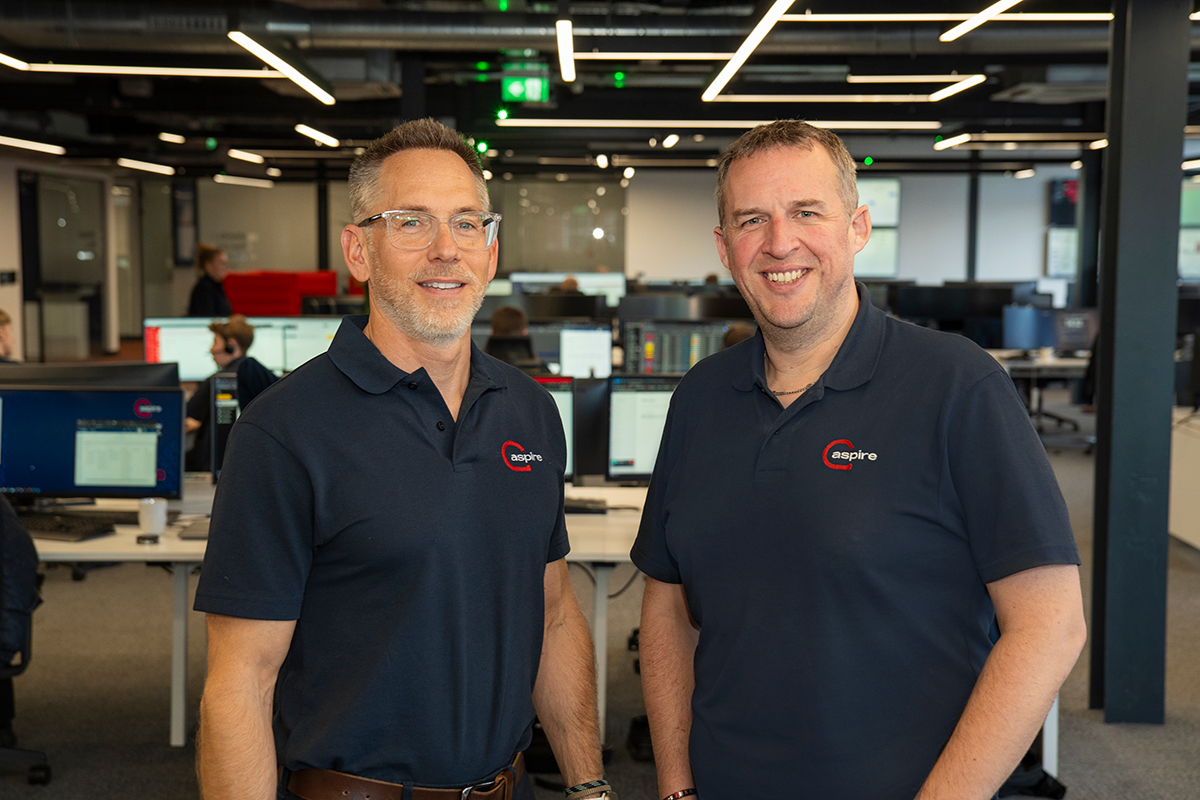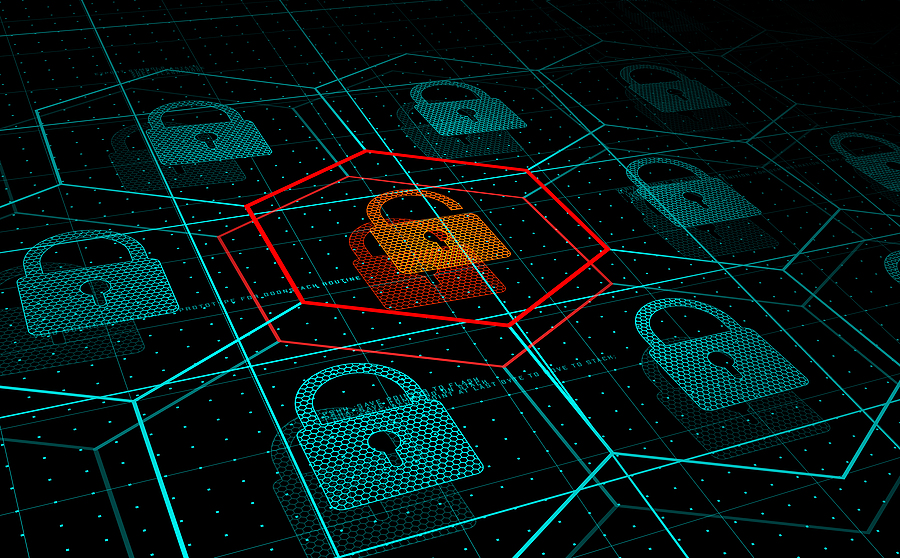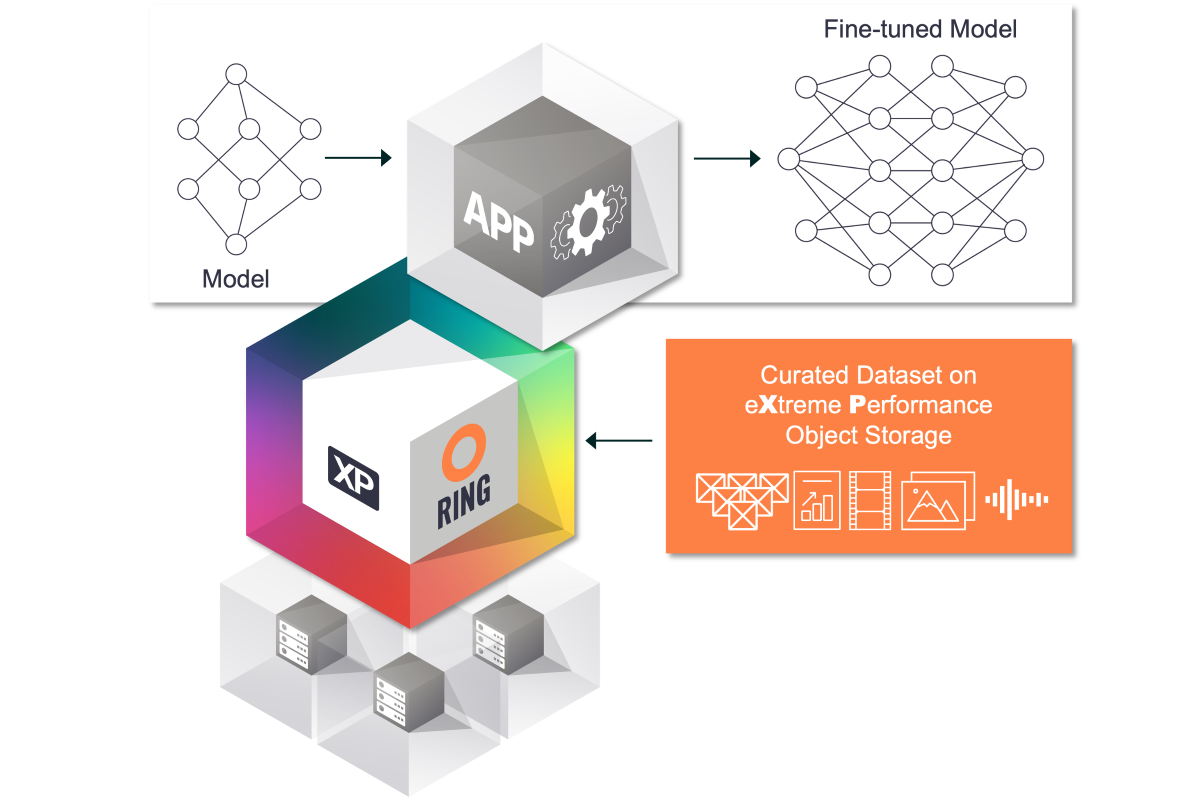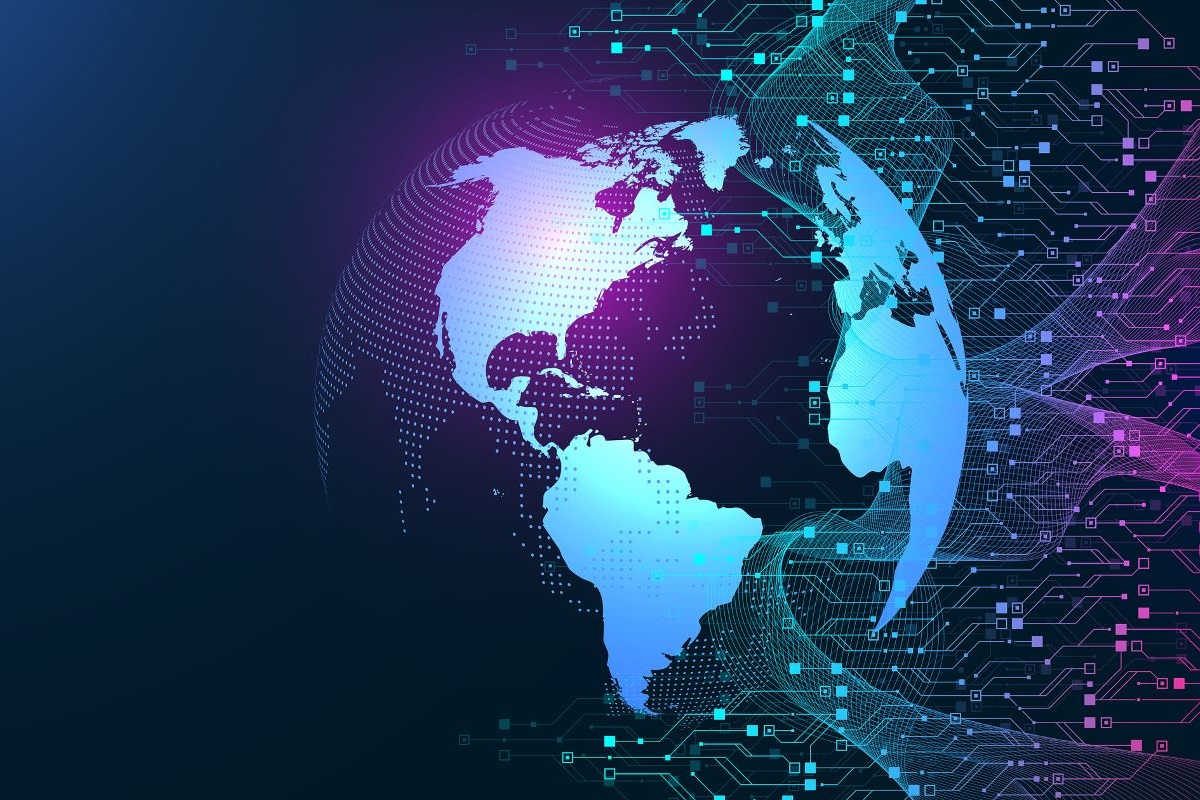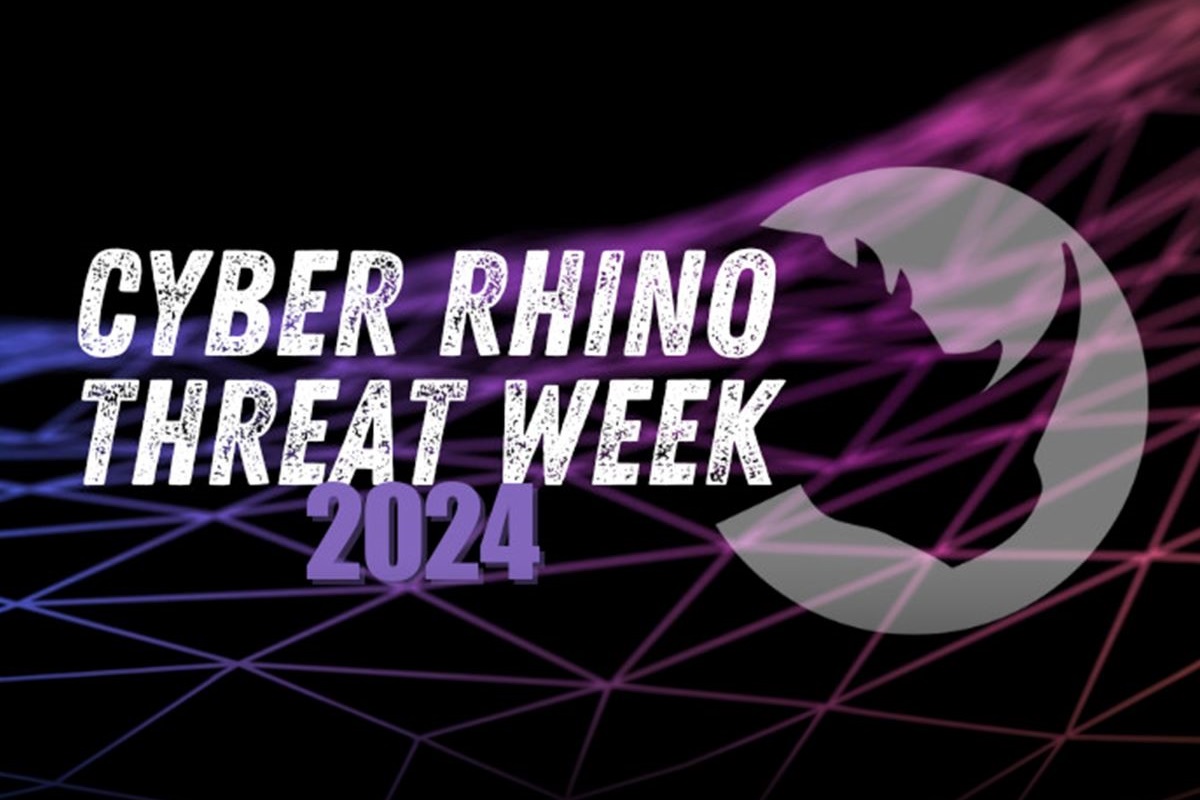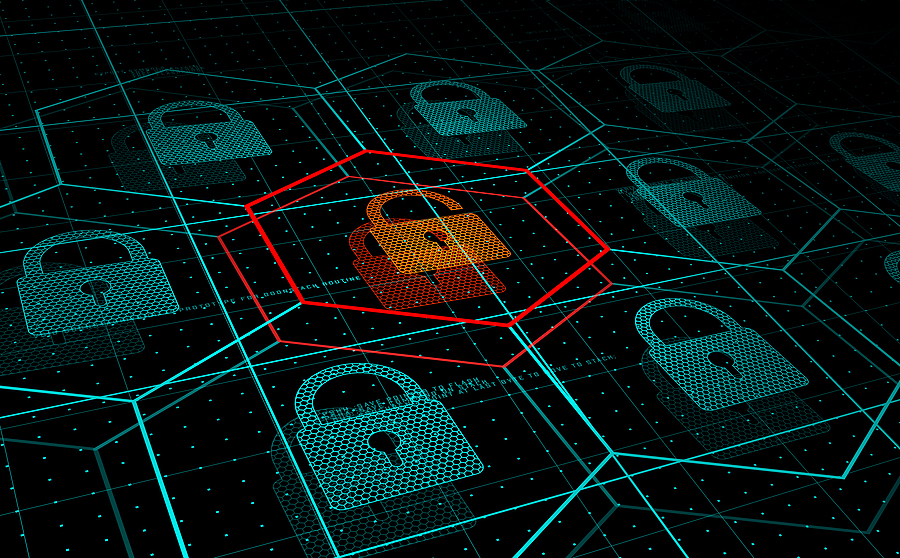Data Centre Security: Protecting Infrastructure from Physical and Cyber Threats
Data Centre Security: Protecting Infrastructure from Physical and Cyber Threats
Enterprise Network Infrastructure: Design, Performance & Security
News
Singtel expands its suite of quantum-safe offerings
Singtel today announced that it will be enhancing its suite of quantum-safe offerings to help enterprises fortify their defences against cyber threats and scale more securely in the quantum age.
This involves integrating Post-Quantum Cryptography (PQC) technology, which is algorithms engineered to resist the computational power of attacks from quantum computers, from leading cybersecurity solutions providers, Palo Alto Networks and Fortinet, into Singtel’s nationwide Quantum Safe Network (QSN).
As part of the collaboration, Palo Alto Networks will protect against quantum threats with a PQC IPSec (Internet Protocol Security) virtual private network (VPN), using the new post-quantum encryption standards established by the US National Institute of Standards and Technology for secure data transmission and authentication.
Fortinet’s quantum-compatible solutions will integrate PQC and Quantum Key Distribution (QKD), which is a secure method for distributing encryption keys only known between shared parties, to support the development of a secure, scalable, and commercially viable QSN for Singtel. Singtel will leverage Fortinet’s quantum-resistant PQC software, hardware encryptors, and advanced platforms to build robust quantum-safe architectures and solutions tailored for enterprise needs. Together, these partnerships will ensure that encryption keys remain secure across diverse applications, including identity, mobility, and authentication services – creating a more resilient defence for enterprises against cyber threats.
Keith Leong, Managing Director, Enterprise, Singtel Singapore, says, “Quantum computing presents a significant threat to traditional encryption methods, and has the potential to disrupt our digital economy by potentially decrypting sensitive data, exposing businesses to significant risks. The addition of Palo Alto Network and Fortinet’s enhanced software solutions to our QSN ensures our enterprise customers get more industry-leading choices to secure their business against both current and future quantum threats, regardless of their hardware requirements. We encourage enterprises to take the necessary steps to secure their critical assets sooner rather than later.”
Steven Scheurmann, Regional Vice President of Palo Alto Networks in ASEAN, adds, “Quantum computing represents a revolutionary technology that promises tremendous advancements but also introduces potential risks, especially for data security. At Palo Alto Networks, we are committed to helping enterprises prepare for this future. By integrating our quantum-resistant VPN solutions with Singtel's Quantum-Safe Network, we're ensuring that customers can safeguard critical data against both current threats and encryption-breaking capabilities of future quantum computers. It's essential to take action today to secure tomorrow's digital landscape and we are proud to be part of Singtel's efforts to lead in this space.”
Jess Ng, Country Head, Singapore and Brunei, Fortinet, remarks, “As quantum computing evolves, so must our approach to cybersecurity. Fortinet is proud to collaborate with Singtel to strengthen the nation’s defences against emerging threats. By integrating Post-Quantum Cryptography (PQC) and Quantum Key Distribution (QKD) into Singtel’s Quantum-Safe Network, building hybrid architecture, and leveraging quantum-safe solutions, we are helping enterprises stay ahead of future risks. Through the development of industrial and government use cases, we are committed to building a foundation for a more resilient and secure digital future.”
Following the Infocomm Media Development Authority’s appointment last year to develop a nationwide QSN to fortify Singapore’s resilience against quantum threats, Singtel launched the nation’s first QSN with global leader in quantum-safe cryptographic solutions, ID Quantique (IDQ).
IDQ recently released a comprehensive and field-proven quantum-safe key exchange platform, Clarion KX, to manage hybrid cryptography on the network and facilitate large scale deployments of integrated quantum-safe networks. By hybridising PQC algorithm-based encryption and quantum physics-based communication security, Clarion KX ensures a highly secure quantum key distribution across Singtel’s QSN locations and provides enterprises with a cost-effective solution for long-term quantum-resilience of their core networks.
Earlier this year, Singtel also signed three Memoranda of Understanding with industry leaders, Cisco, Fortinet, and Nokia, so enterprises can easily deploy Cisco's routing platform, Fortinet's firewalls and Nokia's optical devices to boost their defences against advanced cyber threats.
Singtel’s QSN is part of its domestic network offerings which are built and engineered to secure business-critical data and provide enhanced security for the data network and flexibility as a managed service.
For more from Singtel, click here.
Simon Rowley - 11 November 2024
Cyber Security Insights for Resilient Digital Defence
Data Centre Security: Protecting Infrastructure from Physical and Cyber Threats
News
Integrity360 launches Managed dSOC Services
Integrity360, a pan-European cyber security specialist, today announced the launch of its Managed dSOC Services, an advanced security monitoring solution powered by Darktrace's AI-driven technology and Integrity360’s cyber security expertise.
The partnership allows Darktrace customers to gain access to an expert team dedicated to ensuring continuous, real-time monitoring, with around-the-clock expertise that internal teams may lack and to fully optimise and benefit from the capabilities of the platform.
The Managed dSOC Services are tailored to support businesses with proactive threat detection, rapid incident response, and continuous optimisation of their security investments, ensuring comprehensive protection against constantly evolving threats.
According to a recent report from Gartner, organisations that do not optimise and manage their cyber security solutions effectively may see a 30% increase in security incidents over the next three years. Integrity360’s Managed dSOC Service directly addresses this challenge by offering a fully managed service that takes the burden off internal teams, allowing businesses to focus on growth while ensuring optimal protection.
Eloina Pesce, Vice President of Channel, Darktrace, comments, “As organisations look to invest in AI-driven security tools like Darktrace, their internal teams may lack the time or skills to fully leverage them to their greatest benefit. Integrity360’s Managed dSOC fills a crucial gap for those organisations, helping them maximise their cyber security posture and reduce risk.
“Not only that, but Integrity360 experts build on the Darktrace ActiveAI Security Platform’s AI-driven detection and response with tailored services like proactive threat hunting and enhanced breach monitoring to provide an even greater level of protection.”
For Integrity360’s Darktrace customers, Integrity360’s Managed dSOC Services represent a critical enhancement to their cyber security investment. Darktrace’s platform, powered by advanced AI, offers unparalleled threat detection and real-time security insights. Augmenting this with Integrity360’s service capacity and expertise to fully manage the system will help organisations harness the platform’s full potential. Companies with a managed service like Managed dSOC will experience enhanced security optimisation, increasing further their return on investment from their Darktrace platform.
Integrity360’s Managed dSOC enables customers to fully capitalise on the benefits of their Darktrace investment, from 24/7 active monitoring to bespoke reporting and continuous AI model optimisation, ensuring clients not only detect threats in real time but also respond swiftly and strategically. With Integrity360’s specialised support, organisations can rest assured that their Darktrace environment is optimally configured, continually adapting to emerging cyber threats, and delivering maximum risk reduction.
“Through our partnership with Darktrace, we’re bringing an unmatched level of expertise and proactive support to our clients, allowing them to unlock the full potential of their cyber security investment,” says Brian Martin, Director of Product Management at Integrity360. “Nobody else can extract the same level of value out of the investment that we can, with this level of service and expertise underpinning it 24x7. Our Managed dSOC service suite brings this additional value within reach of all organisations irrespective of size, resources, or skill levels.”
The Managed dSOC service goes beyond traditional security operations by not only managing day-to-day monitoring, but also providing ongoing tuning and optimisation, incident support, and threat analysis to keep clients’ defences agile and aligned with current threats.
Integrity360’s Managed dSOC Services are available in three distinct tiers:• Managed dSOC: Core operational monitoring and breach detection, with daily reports for complete visibility and monthly health check• Managed dSOC+: Adds 24/7 active monitoring, high-value asset tagging, and periodic threat reviews for a more robust approach to security• Managed dSOC + MDR: Delivers advanced capabilities including threat response and proactive threat hunting
These flexible options allow businesses to select the level of support they require, from foundational monitoring to advanced threat detection and response, ensuring scalability as needs evolve.
Cyber security requires rigorous oversight and constant adaptation to new risks and Integrity360’s Managed dSOC Service addresses a prevalent universal challenge for most organisations: the cyber security skills and resource gap. Integrity360’s dedicated team of Darktrace experts ensures that every deployment is tailored to the client’s specific needs, refining configurations and implementing high-value security protocols to reduce exposure and enhance incident management.
As threats like ransomware, advanced phishing attacks, and supply chain compromises continue to surge, Integrity360’s Managed dSOC Services offer an essential service for companies seeking to strengthen their security posture while mitigating the complexity associated with managing AI-driven solutions. Managed dSOC Services represent a critical tool for businesses in high-risk sectors such as finance, healthcare, retail, government, and more, providing a comprehensive solution that combines advanced AI capabilities with expert oversight. By maximising the potential of Darktrace, organisations can minimise risk and confidently protect their critical assets.
Simon Rowley - 6 November 2024
Cyber Security Insights for Resilient Digital Defence
News
Aspire completes acquisition of CloudCoCo
Aspire Technology Solutions, a provider of managed IT, cyber security, and modern workplace technologies, has announced the acquisition of CloudCoCo, an experienced managed service provider headquartered in Leeds.
The acquisition marks a strategic advancement in Aspire’s plan to expand its UK presence and further strengthen its ability to deliver managed IT services, robust security solutions, and integrated modern workplace technology to clients across multiple industries, from SME to enterprise.
Building on Aspire’s successful acquisition of Cloud Cover IT in January 2024 - which expanded its footprint in Scotland and strengthened its service capabilities - CloudCoCo’s established relationships, skilled team, and expertise in managed IT, cloud, and unified communications will enable the Aspire Group to provide more tailored, responsive services that address the evolving needs of businesses across sectors. The acquisition will bring over £10 million in additional revenue and approximately 300 new customers to Aspire, setting the stage for future growth.
Chris Fraser, Aspire CEO and Founder, comments, “While CloudCoCo has undergone a period of structural transition, what truly stood out to us was its strong relationships with its high-quality customer base and the expertise within its team. These strengths align perfectly with our commitment to delivering technology like no other.
“This acquisition not only broadens our reach, but also enhances our ability to offer responsive, innovative solutions that meet the evolving needs of our clients. The CloudCoCo team will be an important part of Aspire’s next chapter, and together, we’re ready to make an even greater impact across key UK regions”.
Darren Weston, Group Operations Director at CloudCoCo, adds, “Joining Aspire represents an exciting new phase for CloudCoCo. We look forward to working closely with Chris and the team to expand our reach, deliver added value, and provide a wider range of innovative solutions. Aspire’s commitment to excellence aligns well with our own; it’s a powerful collaboration with a trusted UK technology provider that shares our values and goals.”
Aspire’s recent £1.7 million reinvestment in its established technology stack, as outlined in its FY24 accounts, reinforces the capabilities of its next-generation Security Operations Centre (SOC) and other critical infrastructure. Supported by LDC, a leading private equity firm known for backing high-growth UK businesses, this underscores Aspire’s dedication to driving innovation and maintaining the highest standards of service.
With an expanded presence across Gateshead, Glasgow, London, Stockton, and now Leeds, Aspire is seeking to set new benchmarks in managed IT, cyber security and modern workplace solutions for businesses throughout the UK.
For more from Aspire, click here.
Simon Rowley - 4 November 2024
Data
Data Centre Security: Protecting Infrastructure from Physical and Cyber Threats
News
Keepit scoops accolades at Infosec Innovator Awards
Keepit, a global provider of a comprehensive cloud backup and recovery platform, triumphed in four categories at the Top Infosec Innovator 2024 Awards, which took place at the recently-held CyberDefenceCon in Orlando, Florida.
Keepit was named the winner in the following categories: Cutting Edge Cloud Backup; Most Innovative Cyber Resilience; Hot Company Data Security Platform; and Hot Company Ransomware Protection of SaaS Data.
Headquartered in Copenhagen, Denmark, with offices and data centres globally, Keepit future-proofs cloud data for organisations, ensuring business continuity and access to information.
Michele Hayes, CMO at Keepit, comments, “Ransomware is only one of the many threats companies face in today’s cyber security landscape. Keepit provides the tools for companies to be secure and confident in their disaster recovery plans: a platform that enables rapid recovery and data monitoring for early anomaly detection. We’re thrilled that Cyber Defense Magazine has recognised our platform for these coveted awards.”
For more from Keepit, click here.
Simon Rowley - 4 November 2024
Data Centre Security: Protecting Infrastructure from Physical and Cyber Threats
News
Scality introduces RING XP storage software
Scality, a developer of cyber-resilient storage software for the AI era, has unveiled RING XP, a new all-flash configuration of its RING storage software engineered for extreme performance. The company states that RING XP is now the fastest object store with microsecond response-time latencies for small object data, making it ideal for AI model training and fine-tuning.
Scality claims that RING XP is 10 to 20 times faster than Amazon S3 Express One Zone, and 50 to 100 times faster than Amazon S3 in terms of latency (milliseconds compared to microseconds). It is reportedly the first software-defined object storage solution to perform at levels previously only available from most costly, proprietary, hardware-based all-flash file systems and block arrays - but with the inherent advantages in scalability, simplicity, API access, security and cost provided by object storage.
Scality RING was recently ranked as number one on the 2024 GigaOm Radar for Enterprise Object Storage - achieving the highest scores across Key Features, Emerging Features and Business Criteria categories, and ahead of 17 competing vendors. RING already delivers scale-out, high-throughput capabilities used by hundreds of enterprises and service providers worldwide to power their critical business workloads.
“We have evolved the world’s most comprehensive and flexible object store and made it the world’s fastest,” says Giorgio Regni, CTO and Co-Founder of Scality. “Organisations globally have been looking to maximise how AI delivers value for their business. Object storage is a natural foundational repository for exabytes of data across the AI pipeline. With RING XP, we’ve not only optimised object storage for extreme performance but also reduced data silos - offering one seamless flexible technology for both long-term data retention and ultra-high performance AI workloads.”
To take object storage performance to a new level of microsecond response-time latencies, RING XP is based on:
• AI-optimised RING XP object storage connectors to provide scale-out, fast access to storage from applications• A performance-tuned RING storage software that accelerates storage I/O throughout the stack• AMD EPYC-based all-flash NVMe storage servers from Lenovo, Supermicro, Dell and HPE. EPYC provides industry-leading support for PCIe and NVMe, and the highest number of cores in single-socket CPUs to deliver optimal latencies
By achieving microsecond-level write (PUT) and read (GET) latency for 4KB objects, RING XP delivers performance to make it the ideal fast object storage target for AI tools, custom-developed applications, and performance-optimised file systems used for training AI models. Additional details on how RING XP attains microsecond latencies - considered the world’s fastest for object storage - are documented in the company's Solved blog.
RING XP, together with RING, delivers an end-to-end AI data pipeline storage management solution, designed to optimise and accelerate emerging AI-enabled business processes. Unlike traditional storage solutions that address only fragments of the AI workflow, RING XP and RING provide a unified platform that supports every stage of the AI pipeline - from ingesting massive datasets to model training, inference, and beyond.
The solution provides:
• RING as the foundational repository for AI data lakes with warm/cool/cold data at exabyte scale• RING XP for the extreme low-latency requirements of AI training data sets• Integrated lifecycle management for all phases of the data pipeline• Managed through a common framework of management and monitoring tools• End-to-end cyber-resiliency through integrated CORE5 capabilities to ensure security and data privacy
For more from Scality, click here.
Simon Rowley - 1 November 2024
Cyber Security Insights for Resilient Digital Defence
Data Centre Security: Protecting Infrastructure from Physical and Cyber Threats
Enterprise Network Infrastructure: Design, Performance & Security
News
Chief Telecom and RETN to enhance DDoS protection
Chief Telecom, a major telecommunications provider in Taiwan offering high-performance data centre services, network solutions, and cloud services, has partnered with RETN, a global network services provider, to leverage RETN’s newly launched DDoS mitigation platform.
The solution integrates RETN’s advanced DDoS mitigation technology with Chief Telecom’s strong IP Transit services customer portfolio, offering Chief Telecom’s customers protection against evolving cyber threats while maintaining high-quality, resilient internet connectivity. RETN’s platform provides automated threat detection and mitigation, leveraging machine learning to detect malicious traffic before it reaches the network, ensuring uninterrupted service even during large-scale cyberattacks.
In addition, the new platform benefits from RETN’s extensive global network, which connects Europe and Asia, making Taiwan a crucial point in this intercontinental link. The partnership ensures that Chief Telecom can offer businesses in Taiwan robust security features, including volumetric attack protection, application layer defence, and protocol attack mitigation, all supported by a 24/7 Security Operations Centre (SOC) and real-time alerts.
Tim Chiang, Vice President of Chief Telecom, says, “By partnering with RETN, we are empowering our customers in Taiwan with world-class DDoS protection and resilient network connectivity. This collaboration ensures that businesses can operate without fear of downtime, even in the face of the most sophisticated cyber threats.”
Chief Telecom's Taipei Internet Exchange (TPIX) is one of the largest in Asia, connecting businesses and internet service providers (ISPs) across the region. Chief Telecom plays a key role in ensuring Taiwan’s status as a digital hub, delivering robust connectivity and innovative services to businesses in Taiwan and beyond.
As Taiwan grows into a global technology hub with one of the highest internet penetration rates in Asia, businesses face an increasing threat of cyber attacks, especially Distributed Denial of Service (DDoS) attacks. Taiwan’s position as a key gateway for Asia-Pacific internet traffic also increases its exposure to cyber security risks. Chief Telecom thus sought a solution that could provide customers with enhanced DDoS protection, ensuring uninterrupted and secure network services, which are critical for Taiwan’s data-driven economy and high-tech industries.
For more from Chief Telecom, click here.
Simon Rowley - 29 October 2024
Cyber Security Insights for Resilient Digital Defence
Data Centre Security: Protecting Infrastructure from Physical and Cyber Threats
Events
News
Online event to focus on critical aspects of threat intelligence
ThreatQuotient, a threat intelligence platform innovator, has announced the launch of Cyber Rhino Threat Week, an online event offering key insights from industry leaders and ThreatQuotient executives.
Together, they will tackle the most pressing aspects of threat intelligence management. The virtual event will run from 9-13 December and will examine the latest best practices in threat intelligence and addressing the ever-evolving landscape of cyber threats.
Throughout the week, cyber security leaders and practitioners from all sectors are invited to attend five dedicated one-hour sessions with multiple registration time options to suit the three regions: the Americas, EMEA and APAC.
Each session will focus on different aspects of threat intelligence providing guests with actionable insights and a comprehensive understanding of how to enhance the effectiveness of organisational threat intelligence programmes and initiatives.
Commenting on the event, Gigi Schumm, Chief Revenue Officer at ThreatQuotient, says, “Cyber security teams increasingly depend on the strength of collective intelligence, not just to protect their own organisations but their industry and ecosystem of partners.
“By equipping ourselves with and sharing the latest threat intelligence and best practices, we can develop strategies to prevent attacks and build industry-wide defences. Cyber Rhino Threat Week exemplifies this effort by gathering top industry insights from key players within the threat intelligence market such as the Head of SOC for Paris 2024, the President and CEO at Cyber Threat Intelligence, the EMEA Executive Director at FS-ISAC and the Technical Director for the National Directorate of Custom Intelligence and Investigations.”
This inaugural event underscores ThreatQuotient's commitment to promoting intelligence sharing and collaboration across organisations in order to develop industry-wide responses to cyber threats. With Cyber Rhino Threat Week, ThreatQuotient offers participants a forward-thinking perspective on the future of collective intelligence in cyber security.
The sessions featured include special guests and four partners (Dataminr, Team Cymru, Google Cloud and Cybersixgill) who are co-sponsors of the event.
For further details and registration, click here.
For more from ThreatQuotient, click here.
Simon Rowley - 23 October 2024
Cyber Security Insights for Resilient Digital Defence
Data Centre Security: Protecting Infrastructure from Physical and Cyber Threats
Enterprise Network Infrastructure: Design, Performance & Security
News
Espria launches Security Service Edge solution
A new enhanced network security solution has been launched by Espria, a provider of digital workspace solutions.
Espria Security Service Edge (SSE) has been designed and developed for any organisation currently using legacy VPN solutions or Always On VPN.
Based on Zero Trust principals, Espria SSE replaces the traditional connections to the user's applications, delivering enhanced network security and a seamless user experience that does not compromise on performance or security. Espria thus claims that its Espria SSE is the complete cloud-based solution for workforce access.
Brian Sibley, Virtual CTO at Espria comments, “Espria SSE replaces legacy VPNs with ZTNA to minimise the risk of implicit trust and lateral movement and has been designed to reduce the complexity of your existing security estate, as well as cost. With fewer security tools to manage, it means organisations will experience increased efficiency and reduced OpEx.
“Furthermore, by leveraging existing Conditional Access policies, organisations will be able to maximise their existing investment in Microsoft tools, while enhancing their security position.”
Brian continues, “Cyber security breaches and attacks remain a constant threat for businesses of all sizes. According to the UK Government’s latest Cyber Security Report 2024, half of businesses (50%) and around a third of charities (32%) have reported some form of cyber security breach or attack in the last 12 months. By far the most common type of breach or attack is phishing (84% of businesses and 83% of charities).
“Espria's new SSE solution has been launched in response to this rise in attacks, and specifically developed to protect existing investments in Microsoft security solutions. By delivering a solution that unifies an existing security administration, Espria has, for the first time, made available an enhanced security solution that is not only seamless, but cost effective and less complex for users.”
Espria SSE is offered in a number of packages dependent on the individual requirement of an organisation.
For more from Espria, click here.
Simon Rowley - 15 October 2024
Cyber Security Insights for Resilient Digital Defence
Data Centre Security: Protecting Infrastructure from Physical and Cyber Threats
Feature - The ways to fight back against rising DDoS attacks
By Tema Hassan, Senior Product Manager at Zayo Europe.
One of the most prevalent cyber threats, DDoS (Distributed Denial of Service) attacks target an organisation's online presence by flooding its internet service with traffic, preventing user access. These attacks can entirely disrupt a business’ connectivity and often serve as a smokescreen for more malicious incursions, such as ransomware.
You only have to look at the data to see the scale of the issue. Zayo Europe's findings indicate a notable increase in the intensity of DDoS attacks and their impact on businesses from the second half of 2023 to the first half of 2024.
On average, a DDoS attack lasted 45 minutes, representing an 18% increase from this time last year. This results in a staggering cost of £4,600 per minute for unprotected organisations, translating to an average of £207,000 per attack. This data alone highlights the severe financial implications of these attacks.
Why are DDoS attacks on the rise?
DDoS attacks are intensifying for several reasons, one of which, AI, is a double-edged sword. On the one hand, criminals are using AI to make their attacks more sophisticated and bypass traditional defence mechanisms. On the other hand, mitigation platforms can leverage AI to efficiently detect and counter emerging threats. Since DDoS attacks remain a profitable tactic for cybercriminals, businesses can expect these attacks to continue as a harsh reality.
Political tensions also appear to be fuelling the increase in DDoS attacks. Government actors and activists frequently use these attacks to make statements or signal intentions. For instance, Imperva's 2024 DDoS report found notable surges in DDoS attacks in Ukraine (519%), Israel (118%), and China (84%).
How can businesses protect themselves?
While it’s not possible to prevent criminals from targeting businesses with DDoS attacks, the duration of an attack can be minimised to the point where it is nearly imperceptible. This is done via an automated redirect of traffic to a system known as a ‘DDoS scrubber’ that ensures that only legitimate traffic passes through.
No matter how long or how severe the attack is, a business that takes this zero-tolerance approach will be properly defended. The attack could last for hours - much like those experienced by governments - but the automated DDoS protection will frustrate the attackers as their efforts will have limited impact. So data centre professionals should certainly be suggesting to clients that they invest in increasing their security.
A robust network infrastructure is also critical for data centres and their clients to effectively counter DDoS attacks. As traffic increases due to 5G, AI, and other technological advancements, threat detection becomes even more important. Organisations need to rely on agile, modern networks as the backbone for connectivity and security. Data centres must adopt these modern, flexible networks and move away from legacy and outdated technologies that create vulnerabilities. Without a flexible, up-to-date infrastructure, effective security becomes impossible.
Don’t wait until it’s too late
As the data indicates, cyber crime is on the rise and shows no sign of slowing down any time soon. While certain sectors - such as manufacturing, telecommunications, and government entities - are more at risk, DDoS attacks can affect any digital business.
Any organisation that holds sensitive data could become a target, even if the company is early in its digital journey. Waiting to find out if you’ll be targeted is akin to leaving the key in your front door at night. Businesses must be proactive and take the necessary steps to protect the organisation, the employees and clients. Otherwise, they risk discovering first-hand just how devastating DDoS attacks can be.
For more from Zayo Europe, click here.
Simon Rowley - 10 October 2024
Cyber Security Insights for Resilient Digital Defence
Data
Data Centre Security: Protecting Infrastructure from Physical and Cyber Threats
News
Infinidat launches cyber security awareness campaign
Infinidat, a provider of enterprise storage solutions, marked the beginning of Cybersecurity Awareness Month by kicking off a campaign to raise awareness about the critical need for enterprises to increase their cyber resilience with next-generation data protection and recovery capabilities in the battle against cyberattacks.
Throughout the month of October, Infinidat will be contributing to awareness-building efforts across its social media channels about the emergence of cyber resilient storage as the last line of defence against ransomware and malware.
“As we embark into Cybersecurity Awareness Month, we’re excited to help enterprises better understand how to incorporate a cyber-centric, recovery-focused strategy with our InfiniSafe capabilities into their overall cybersecurity approach,” says Eric Herzog, CMO at Infinidat. “Cyber attacks have evolved to increasingly target enterprise storage infrastructure. However, the combination of cyber resilience and cyber security closes the gap and vastly improves the ability to mitigate the impact of cyber attacks, especially ransomware. Broader awareness of best practices in cyber resilience and cyber recovery will be one of the crowning achievements of this month dedicated to cyber security.”
Protecting data is one of the most critical actions an IT team must do in their data centre today, and expectations for restoring data and backing up data at multi-petabyte scale have changed. IT teams need to increase next-generation data protection capabilities, and there needs to be data integrity and high reliability with 100% availability, which Infinidat provides. Best practices require an enterprise to ensure data validity and near-instantaneous recovery of primary storage and backup repositories, regardless of the size. This accelerates digital disaster recovery when a cyberattack happens.
Krista Macomber, Research Director, Cybersecurity at The Futurum Group, comments, “Cyber security is established as a board-level priority. Given that, it is the data that attackers are after. CIOs and CISOs have begun to critically evaluate the cyber resilience of their organisation's enterprise storage implementations. With this in mind, the need for cyber resilience has established new table-stakes criteria within the storage infrastructure. Strategic planning for capabilities, like Infinidat's InfiniSafe Automated Cyber Protection that helps to mitigate data loss and downtime resulting from a cyber incident, has become critical.”
Bob Elliott, VP Strategic Alliances, at Mainline Information Systems, adds, “We’re seeing a growing focus on cyber resilience and rapid recovery in enterprise data infrastructure, especially against threats like ransomware. Adopting a recovery-first strategy helps protect businesses from massive cyber attacks. As IT leaders recognise the importance of next-gen data protection, we expect increased adoption of these solutions. In today’s security-driven landscape, boosting cyber resilience is essential for safeguarding storage systems.”
Core pillars of next generation data protection in a cyber-first architecture include: immutable snapshots, logical air-gapping, a fenced forensic environment, and near-instantaneous cyber recovery. These dimensions of cyber resilience are available within Infinidat’s core storage operating system. Moreover, the cyber resilient capabilities that complement, utilise, extend and enable these pillars include cyber detection and automated cyber protection.
Infinidat’s InfiniSafe suite provides extensive cyber resilience capabilities, including InfiniSafe Cyber Detection and InfiniSafe Automated Cyber Protection (ACP) along with the stack of all the core pillars of next-generation data protection. InfiniSafe provides secure, end-to-end capabilities to orchestrate with existing security solutions to detect, contain, mitigate and recover from a cyber attack.
For more from Infinidat, click here.
Simon Rowley - 2 October 2024

Head office & Accounts:
Suite 14, 6-8 Revenge Road, Lordswood
Kent ME5 8UD
T: +44 (0)1634 673163
F: +44 (0)1634 673173
